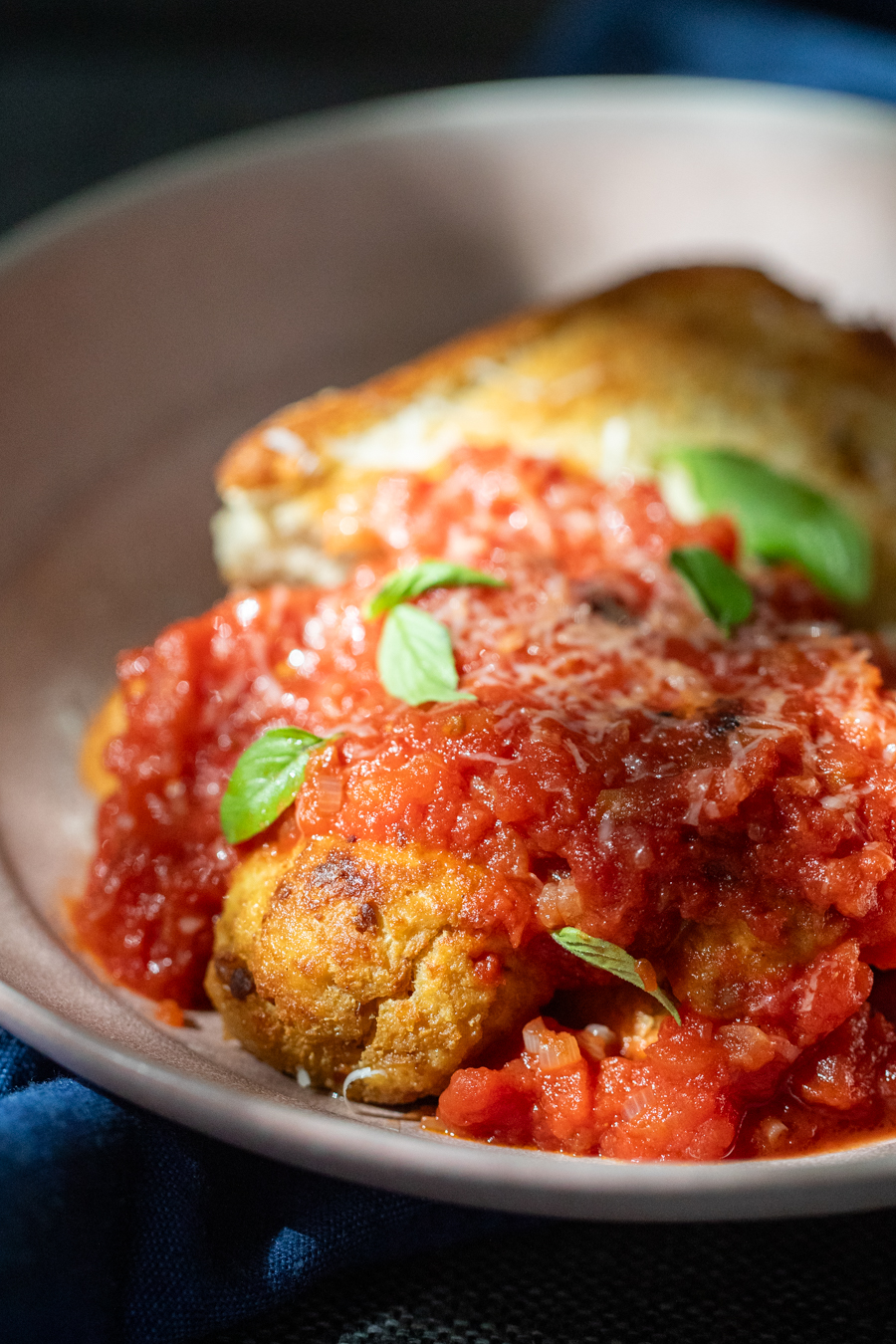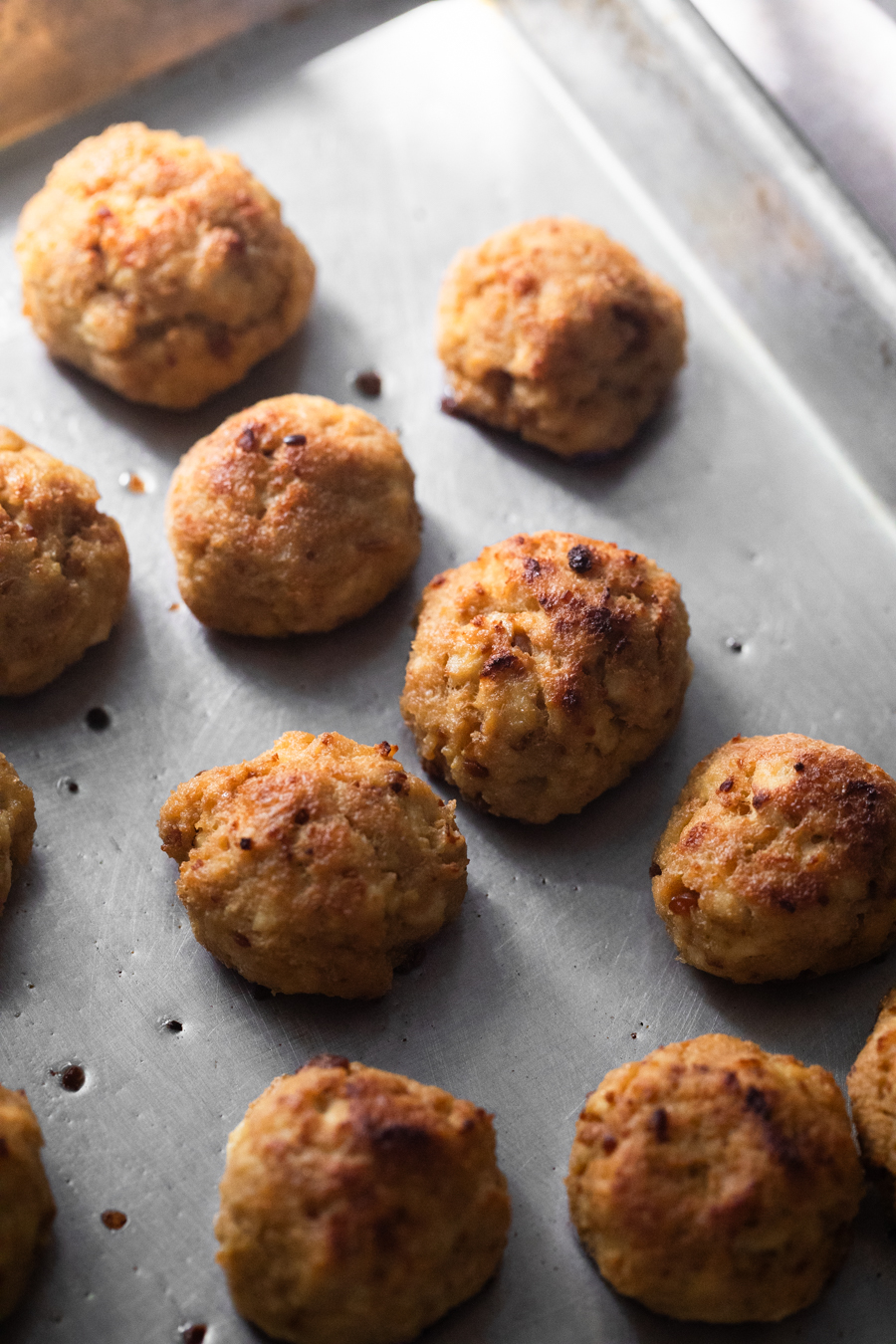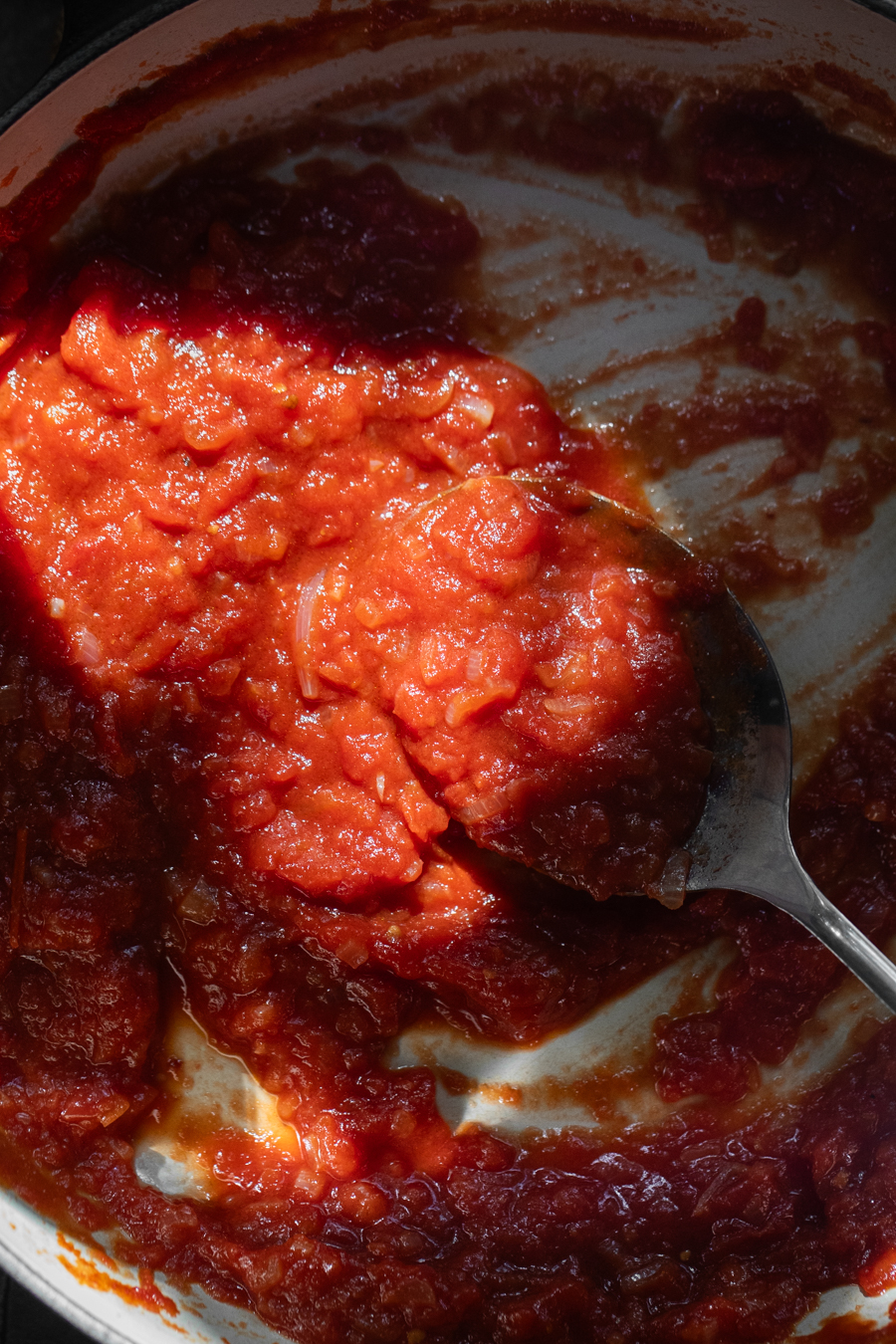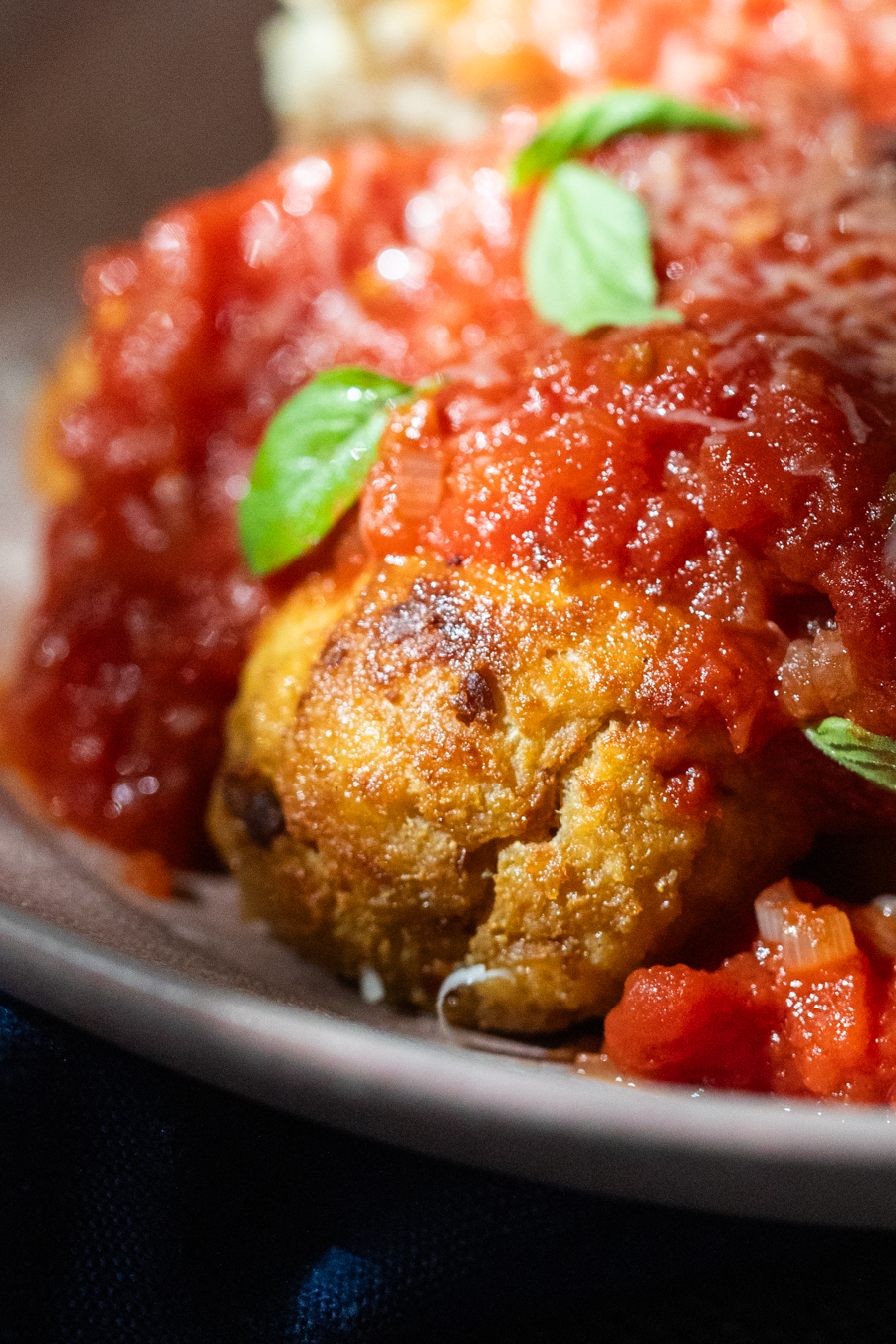Even though I haven’t eaten meat in for many years now, I still get a hankering for types of dishes. Often when this happens, I recreate the meal without meat and am happy. Sometimes, I work on an idea for years until I finally feel like I have it. In this case, the hankering was for meatballs smothered in tomato sauce.
My initial attempt included this nut-based meatballs and while I absolutely adore this recipe, it’s a bit on the heavy side. And so, when I saw this recipe for tofu meatballs on Bon Appetit’s site, I knew it was time to try something a bit different. These tofu meatballs are my now go-to for so many meals and I hope you’ll enjoy them as well.

The main reason to explore beyond my previous meatball recipe came down to texture-- I wanted something just a bit lighter. The bonus, with these tofu meatballs
These meatballs come together quickly and have, to me, a perfect texture. For this recipe, I use firm or extra-firm tofu, without pressing. Using this firmness allows the meatballs to hold their own, while the moisture retains a tender texture and prevents them from feeling dry.

The biggest thing I’m considering when making a recipe that riffs on a meat-based meal comes down to what parts of the thing do I want to create. For me it’s often chasing umami and richness. For meatballs, I’m looking for a bit of a fatty base with a savory finish. And luckily for us, there are a few ways to help achieve these vibes.
In the meatballs, I use nutritional yeast and doenjang. This Korean fermented soybean paste is a must whenever I'm making something that aims to replace meat—the process of making doenjang yields a rich, wonderfully funky, and umami flavor. Doenjang has a distinct profile compared to miso, despite both being made from soybeans. However, I've substituted red or the mellow-white miso in a pinch.
Beyond flavor, I lean on oil to provide a bit of richness as well. The key here is to not let the meatballs dry out during baking by brushing oil midway through baking. Brushing oil over the meatballs helps keep the exterior from feeling overly crusty.

The tomato sauce for this recipe is one of my go-to base sauce recipes that is a bit more garlic-forward then dressed up a bit with the help of harissa paste.
The spices and chile peppers of this heat-forward North African chile paste are a lovely and easy addition to a base tomato sauce. There are several brands of harissa on the market, each with varying heat levels. Ensure you know the heat level and your heat tolerance before adding the amount to the sauce. And, if you're still unsure, start with a small amount and add or taste until you're satisfied.
Finally, in the instructions I mention cooking the sauce to your desired marinara consistency. I prefer my sauce on the thicker side, cooking it a bit longer typically called for in more traditional recipes.
Cooking the sauce is all about cooking the tomatoes and reducing the water content. I like to keep the tomato sauce at a solid simmer, stirring occasionally. Once the sauce is thicker and no longer has a watery appearance, it's ready. This is a great time to add sugar. Canned tomatoes are harvested on the earlier side of being ripe, which also means the tomatoes tend to be a bit more acidic than sweet as sweetness develops as tomatoes ripen. A couple teaspoons of sugar can go a long way to rounding out the flavor of your sauce.



